Ancient Egypt has been marked in history books as the land of suffering for the Hebrew people. Under the rule of the Egyptian Pharaoh Ramesses II, the Hebrews suffered from extreme forms of slavery.
When Moses, a Hebrew prophet, ordered the Pharaoh to let people go back to their hometowns, he refused. This was when the plagues were bestowed upon ancient Egypt.
The plagues of Egypt, unlike any other plagues, were not any usual plagues. They were the consequences of Pharaoh’s actions accompanied by divine intervention.
Exodus, a second book of the Bible, mentions that the plagues are set down as catastrophes imposed on Egypt due to Pharaoh’s actions.
However, the Torah – five books of Moses, mentions that the plagues were sent by Yahweh, the national God of ancient Israel. It was to persuade the Pharaoh to let go of the Hebrews and set them free of slavery from the land of Egypt.
Here is the list of 10 plagues that caused chaos in ancient Egypt with some details.
10. The blood river
Content

Source: Wikimedia Common
In compliance with the book of Exodus, Moses struck his staff in the Nile river, turning the freshwater into the bloody water. The primary purpose of turning the water into blood was to convince the Pharaoh to permit the Israelites to leave Egypt.
However, consequently, it restrained the people of Egypt from consuming water as it produced a foul smell accompanied by harmful toxins.
The transformation seized the lives of the fishes and other aquatic animals residing there. Likewise, the harmful toxins contributed to the degradation of people’s health living near the river.
However, scientists believe that the blood river was caused due to the red tide where algae blow up, creating an algal bloom.
9. Invasion of Frogs
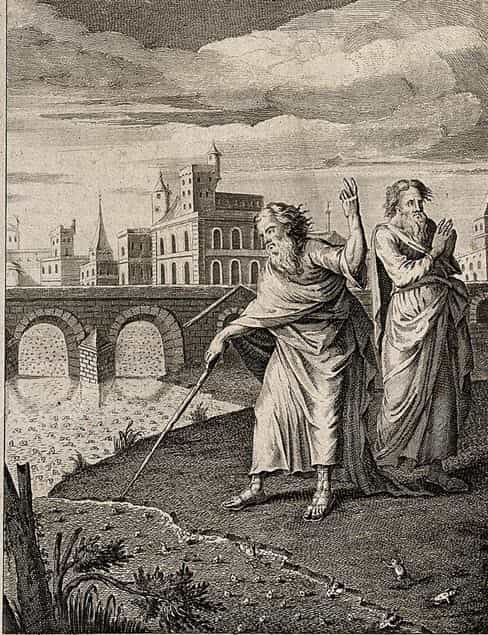
Source: Wikimedia Common
The Pharaoh was hesitant about setting the people free from slavery even after not drinking water from the Nile River. This led to the Egyptian God of frogs, Heqet putting forward the second plague, the invasion of frogs.
With this, the entire kingdom suffered from raining frogs. The frogs were spread all over the domain, including people’s personal spaces, both in-home and in offices.
These frogs moved from town to town in search of food and shelter but ended up dying. Eventually, the lands of Egypt were filled with both dead and alive frogs.
8. Lice infestation

Source: Wikimedia Common
According to the Torah, the Pharaoh asked Moses to remove the plagues and promised to let the Jews go. However, after the plague seemed to have disappeared, the Pharaoh turned on his words.
This breach of promise is what angered Moses, and he set up another plague that would only cause harm to the Israelis, not bothering the Jews.
It was natural for bugs and lice to grow and be seen considerably, as frogs mainly prey on bugs. Since most frogs of the region were dead after they invaded the land, the number of bugs in the area automatically went up.
The roles here were somehow reversed. Frogs fed on bugs to stay alive, but the frogs were instead becoming meals for the bugs after their demise.
However, this infestation did not limit the dead frogs but spread out to households and farms. It affected the entire land of Egypt.
7. Invasion of wild beasts
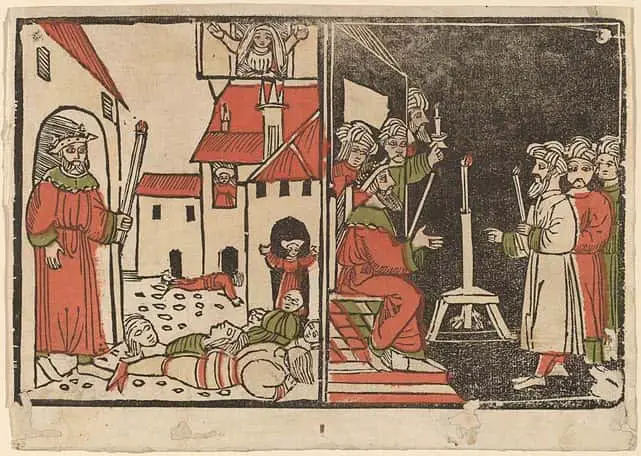
Source: Wikimedia Common
The fourth plague is considered a nightmare to the people of Egypt, as it caused no harm to the Israeli people. The sole purpose of the entire series of plagues was to set the Israeli people free from the atrocities.
This plague is the invasion of wild beasts in the kingdom. These beasts destroyed anything or anyone who came in their way.
This statement, however, was very contradictory, as the beasts would only cause harm to the people of Egypt and not bother the Israeli people.
Miraculously, the beasts not causing any harm to the Israeli people living in the same land would raise suspicions about divine intervention.
6. Bubonic plague
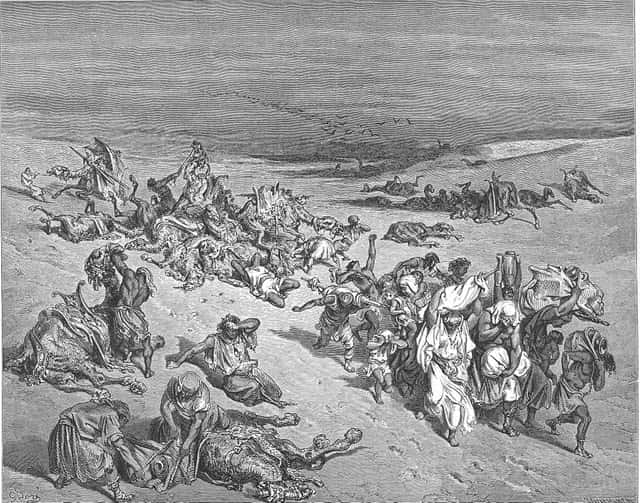
Source: Wikimedia Common
Bubonic plague, also known as the black death, was one of the most dangerous plagues of ancient Egypt. This plague affected humans, cattle, and domestic animals.
This plague was spread from the fleas that got in contact with the Black Rat. These black rats came along the Genoese merchants while they were fleeing a Mongol attack.
People suffered from a swell beneath the armpits and groin area. It took about half the population of ancient Egypt. The person or the animal infected would live only for about 2 to 3 days of being infected.
5. Boils
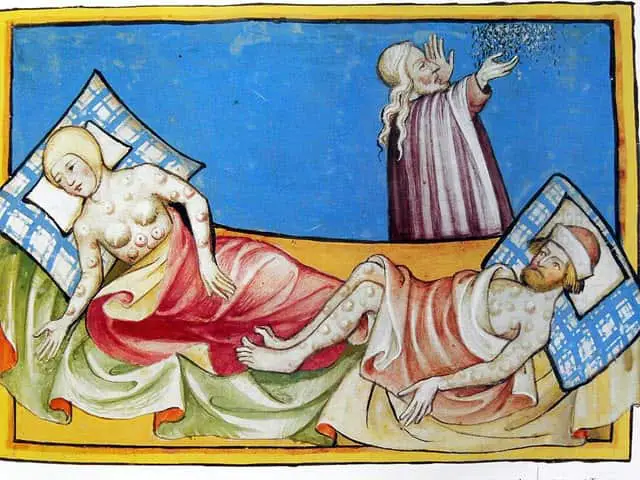
Source: Wikimedia
Boils were extremely painful reddish bumps that form on the skin causing significant discomfort to the person.
Egyptian God ordered Moses and Aaron to take a handful of soot from a furnace and toss it in the air. This act would turn the soot into a speck of fine dust and discharge boils on men and animals throughout the land.
The excruciating pain would make people scream in agony, engulfing the entire land of Egypt in their screams.
When God saw the immense damage of livestock not fazing the Pharaoh enough to let go of the Israeli people, he decided it was time to make a move on the people itself.
People dying from starvation would have already affected many families and towns. To add to that misery, people were physically suffering due to this plague.
4. Raging hail
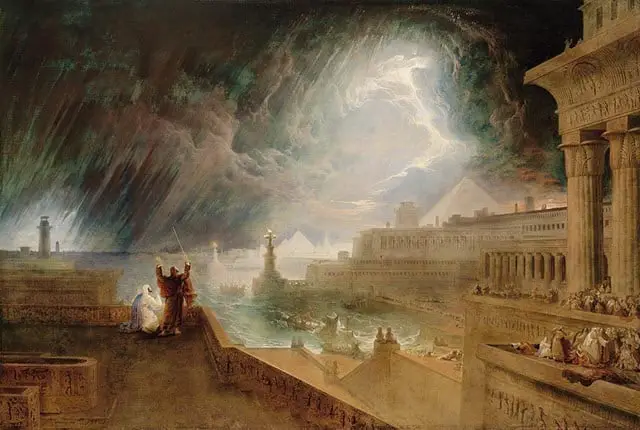
Source: Wikimedia Common
With every passing plague, the Pharaoh’s ignorance began provoking the Lord to become frightening. Following the excruciating boils would come raging hails.
The raging hail would be accompanied by thunder and furious fire. Whether people call it a mere natural occurrence that coincidentally occurred during this period, a miracle cannot be ignored.
While the entirety of Egypt was suffering losses during this raging hail, the area of Goshen, where the Israeli’s resided, was spared.
The miraculous events where only the Egyptians were harmed would warn the Pharaoh to let the Israeli people go.
However, when the Pharaoh would not break his stubbornness, the Lord would increase the severity of the plagues.
3. Locusts
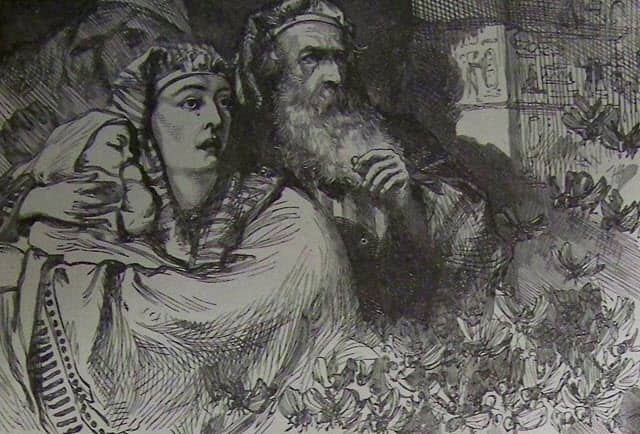
Source: Wikimedia Common
The further ignorance of the Pharaoh would continue to anger the almighty and influence another threatening plague.
Another destruction of locusts accompanies the devastation caused by the raging hails. According to the book of Tanakh, the locusts, a group of short-horned grasshoppers, would bring further destruction to the remaining, which were spared by the raging hails.
Adult locusts had great stamina who could travel very long distances and primarily feed on greens wherever the group decided to settle.
2. Darkness
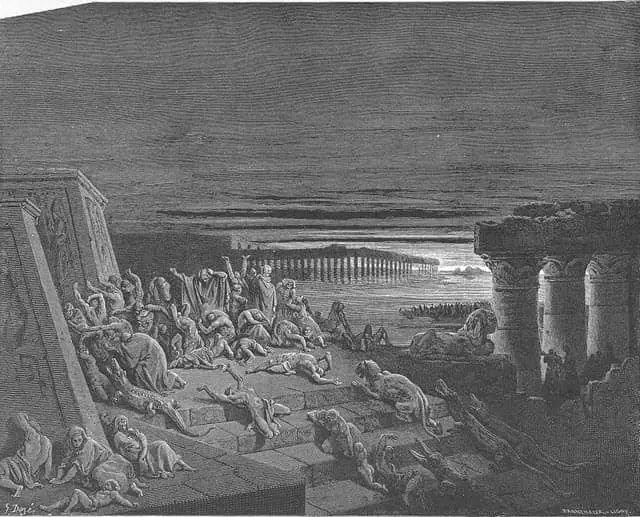
Source: Wikimedia Common
According to Exodus, the Lord asked Moses to stretch his hand out to the sky and create darkness over Egypt.
This darkness would last for three days such that people could not see anything. During these seventy-two hours, the Egyptians walked around relying on their other senses, including touch and sound. However, this inconvenience did not completely break the Pharaoh.
Contrary to historians, modern-day scientists believe this could result from a solar eclipse or mere clouds of volcanic ash.
1. Execution of the firstborn
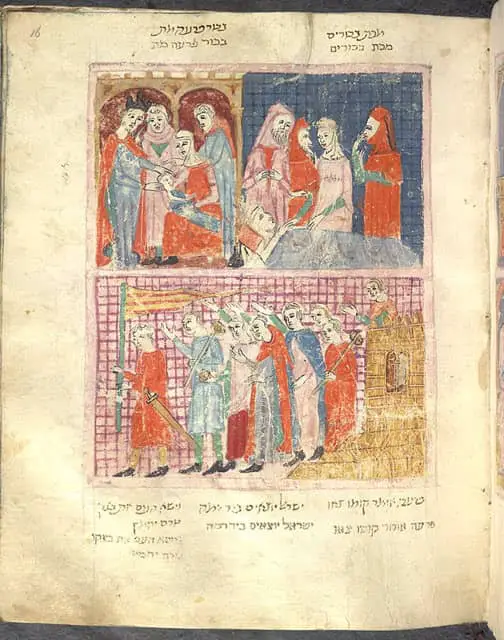
Source: Wikimedia Common
In the endmost plague, Moses warns the Pharaoh about the death of all the firstborns in the kingdom. Whether it be the firstborn of a king, slave, or cattle, all would perish.
This phase of plague was argued to be caused by the harmful toxins produced by the former Nile river causing harm to people from the surrounding areas of the river.
The toxins caused complications during pregnancy, sometimes affecting both the mother and the child.
God commanded Moses to tell the Israeli people to mark lamb’s blood over their doors. This would allow the angel of death to pass over them, ensuring the safety of their firstborns.
The tenth plague marked Pharaoh’s eventual loss and freeing of the Israeli people from slavery.
Conclusion
When the Pharaoh set the Israeli people free of slavery, the people were unaware of something. The Pharaoh let the Israeli people return to their hometown with whatever they wanted to take back.
As they were let go, all of the misfortunes that had been surrounding the lands of Egypt had come to a halt. No more plague following the tenth plague after sending the Jews back to their hometown would make the Pharaoh admit his defeat.
Since God himself had to interfere and break down the Pharaoh after ten whole plagues, this freedom has great significance. Upon their arrival at their hometown, the Israeli people would tell the tales of their liberty to the people residing there.
The Israeli people to this day celebrate Passover, also known as Pesach, remembering the hardships the Jews had to go through to leave Egypt for Israel.
